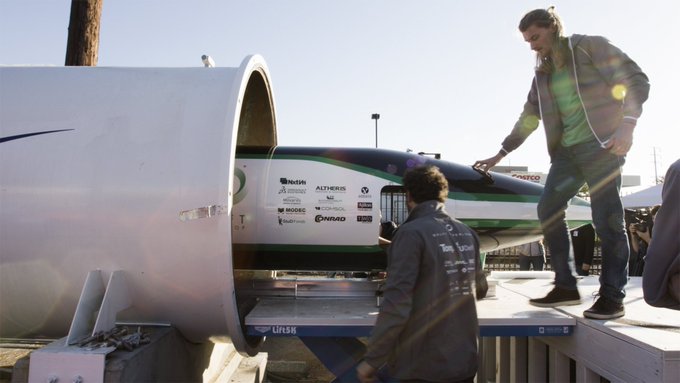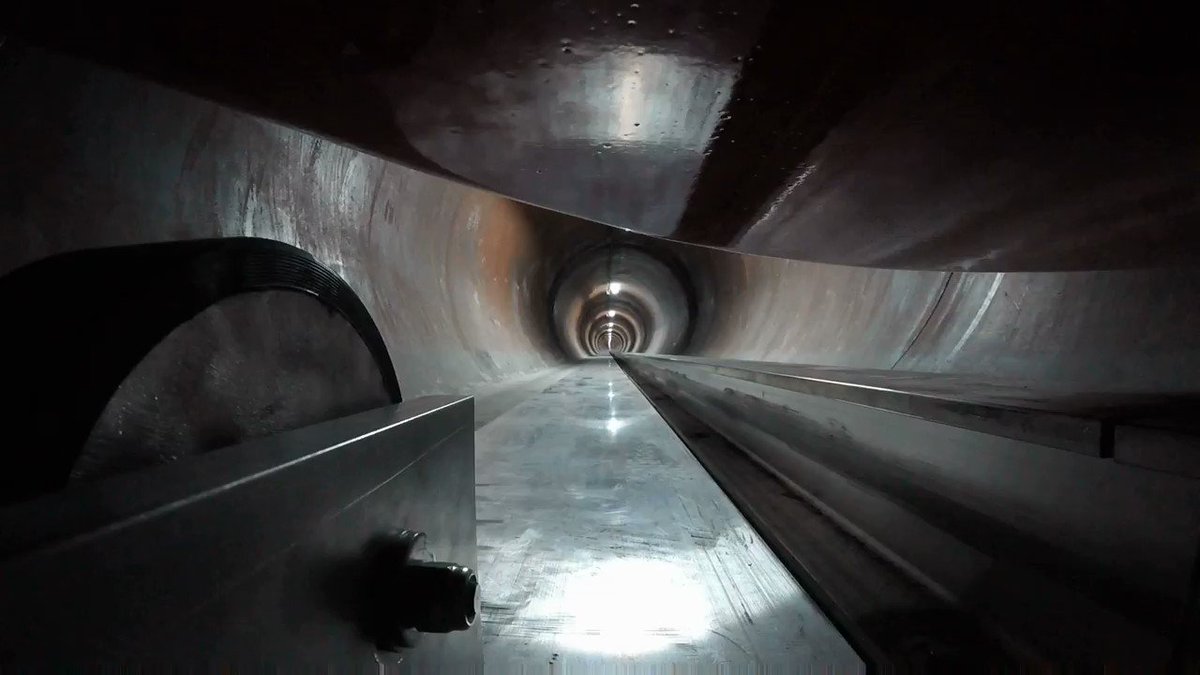Last weekend, excitement ran high at the SpaceX Hyperloop competition, a culmination of a year’s work on dogged research and development to imagine and build the transportation of the future. Just before the first finalist’s pod launched, a rustle ran through the crowd of SpaceX employees, hyperloop teams, and journalists. Elon Musk appeared on the stage.
Back in 2013, Musk released his white paper that theorized the possibility of aerodynamic aluminum capsules filled with passengers or cargo that could travel in a nearly airless tube at roughly the speed of sound. “Hyperloop Alpha” teased the possibility of traveling from San Francisco to Los Angeles in just 30 minutes. His idea inspired engineers and investors around the world, ultimately prompting Musk to launch the design contest. Part one was held at Texas A&M University last year, while part two — in which actual pods were propelled through an actual hyperloop tube, a global first — wrapped up last Sunday.
While not officially scheduled to speak, the billionaire industrialist couldn’t resist, much like at the Texas design competition last year. During that event, over 1,000 students from 120 colleges around the world took on the challenge of turning Musk’s vision of a “fifth mode of transportation” into a reality. The Massachusetts Institute of Technology team was the overall victor of that two-day competition, while 22 other teams advanced to the next stage, tasked with building their proposed pods to test on the SpaceX hyperloop track.
On Sunday, the second phase of the competition culminated at the company’s in Hawthorne, California, just outside of Los Angeles. Twenty-seven teams from all over the world were there to show off their fully functional pods. Each pod was built to scale in order to fit into the hyperloop tube, roughly half the size of the potential finished product. Contestants had less than a year to engineer and build these pods, and while there were a handful of versions presented, the majority of the pods used one of three propulsion systems: wheeled designs, magnetic levitation, and air bearing suspension. The tube — six feet tall, 4,150 feet long, and an outer-diameter of 72 inches — was constructed by SpaceX and built accommodate all three types of propulsion systems. But before any team could put their pod on the track, it had to pass a structural and functional vacuum test.
The stringent tests left some hearts broken. At the end, only three of the 27 teams successfully completed the evaluations to compete at Sunday’s final: Delft University from the Netherlands, WARR from Munich Technical University, and MIT. Only these teams would be able to demonstrate their pods in actions on the test track. For the rest, their journey was at an end — for now.
But first there were speakers.“This is what the future looks like,” said Los Angeles Mayor Eric Garcetti from the podium. “This is a town that consistently is reimagining things, and today, we’re looking at the very first hyperloop pods ever. The ones that are the vision for the future of transportation.”
“THIS IS WHAT THE FUTURE LOOKS LIKE.”
When Musk took the stage, he surveyed the teams around him. The cult of personality surrounding Musk is why many of these college students decided to compete in the hyperloop contest. “What this was really intended to do was encourage innovation in transportation technology, to get people excited about new forms of transport, things that may be completely different from what we see today,” Musk said. With innovation such a prominent part of this competition, it was only fitting for Musk to watch the first of the three finalists propel down the hyperloop from the best seat in the house: directly in front of the only window looking inside the tube.
The final test itself consisted of three phases: pusher, coast, and brake. The SpaceX Pusher resembled the frame of a scaled-down Model S with four wheels. It accelerated to roughly 50 miles per hour, pushing the pods down the track, before the pods start coasting through the tube on their own power. Pods either gain speed or slowly decelerate before the braking phase. Each pod uses their own braking system to come to a stop at the end of the track.
Of the three finalists, the WARR team’s hyperloop pod was up first. After much anticipation, the pod raced down the tube, before hitting the top speed for the competition of 58 mph. This team had much to prove as it was up against the two formidable foes: MIT, which won the best overall design award in Texas, and Delft University, which took home the pod innovation award.
First ever vacuum tube Hyperloop run: watch the wheel #MITHyperloop @SpaceX @hyperloop #maglevworks
The team from Delft University earned the highest score and design and construction awards, while Munich Technical University earned the fastest pod award. MIT didn't win one of the major awards, but took home the safety and reliability award. The University of Maryland team took home the performance and operations award, while the teams from the University of Wisconsin-Madison and rLoop, originally formed on Reddit, took home pod innovation awards.
Round two may be over, but the 24 teams that didn’t make it into the finals still have a chance to compete. The final phase of the three-part competition will happen this summer, and teams that failed to meet the standards to run on the track can make the necessary changes based off the weekend’s test results to be eligible to compete in the final phase. SpaceX says two words will define the final phase of the competition: “maximum speed.”





No comments:
Post a Comment